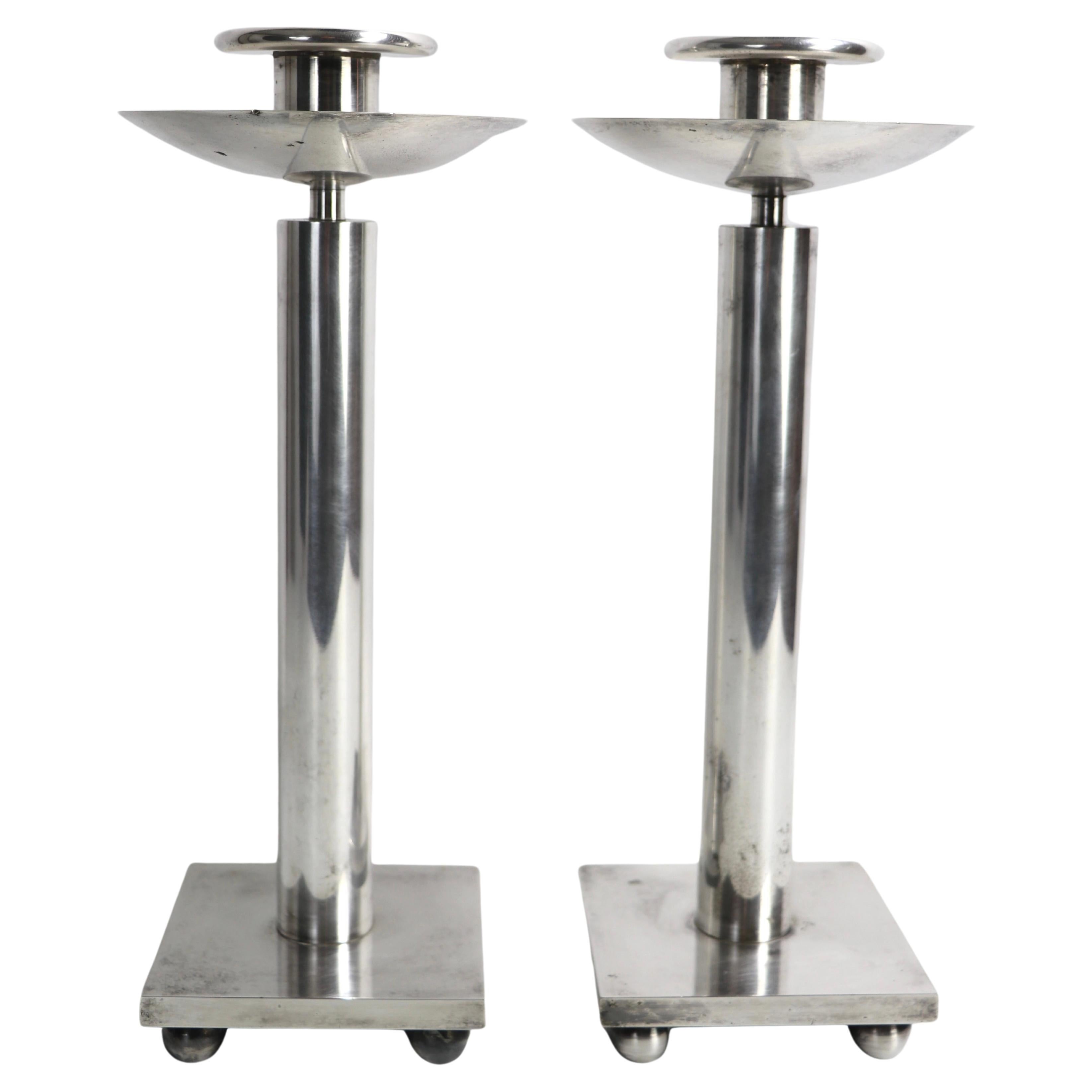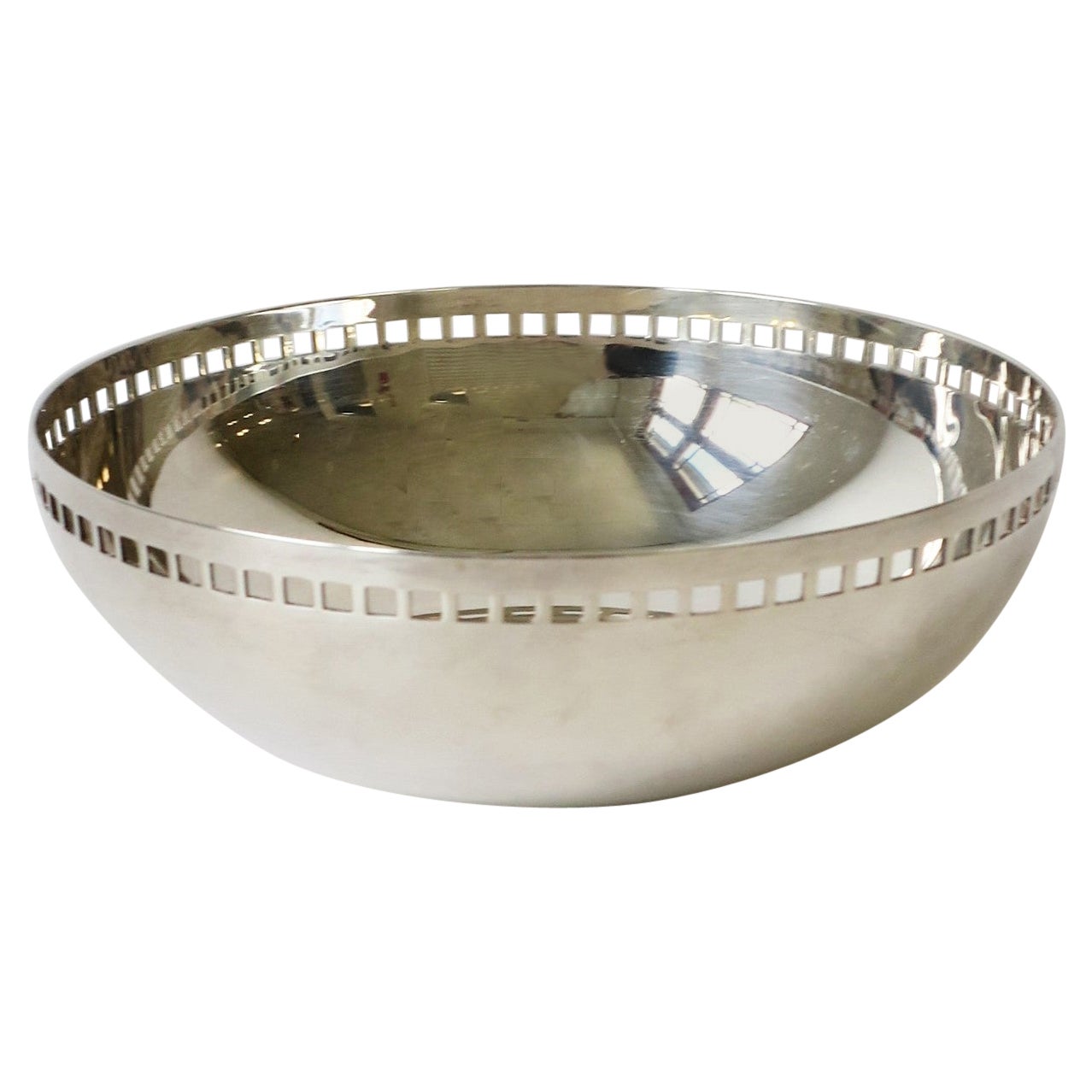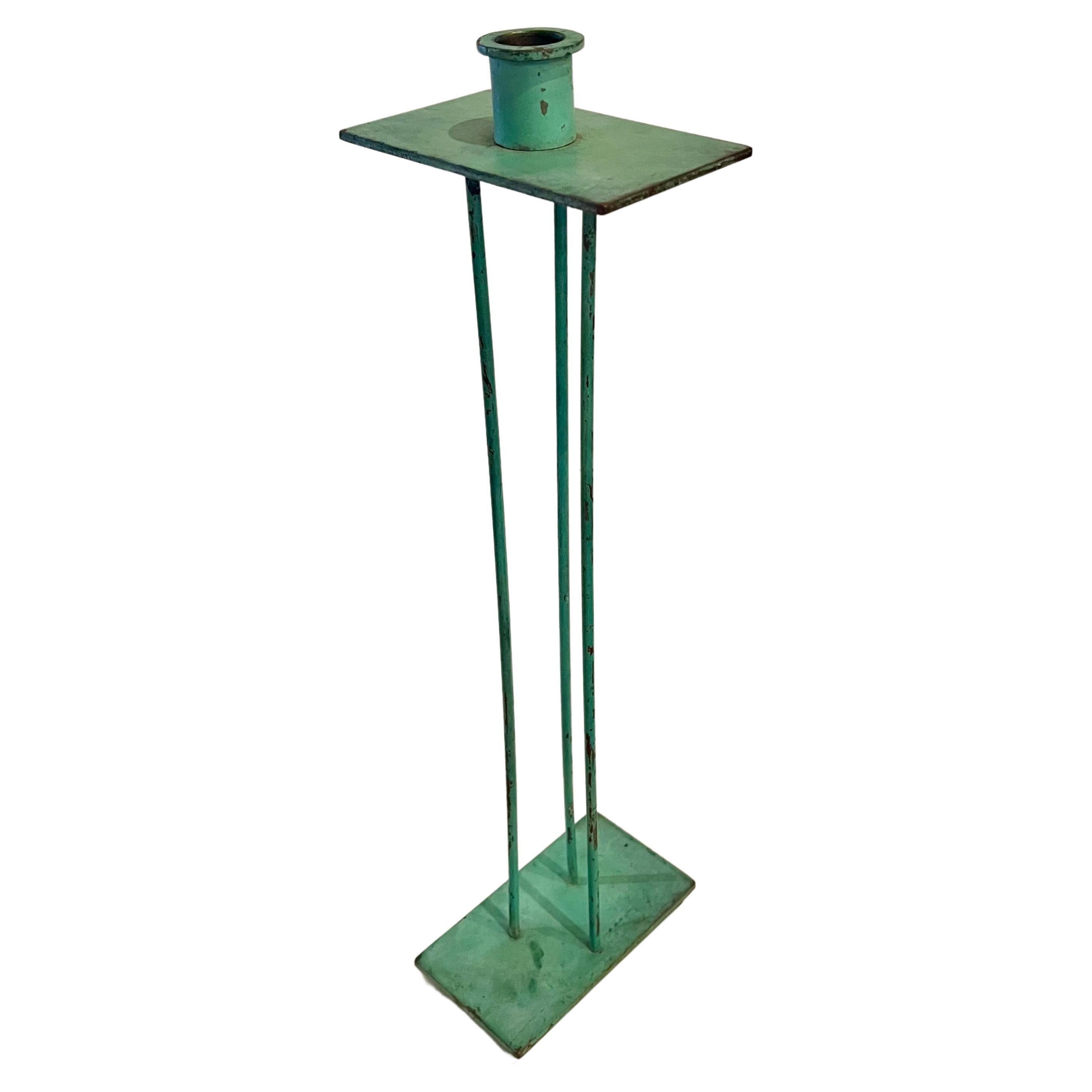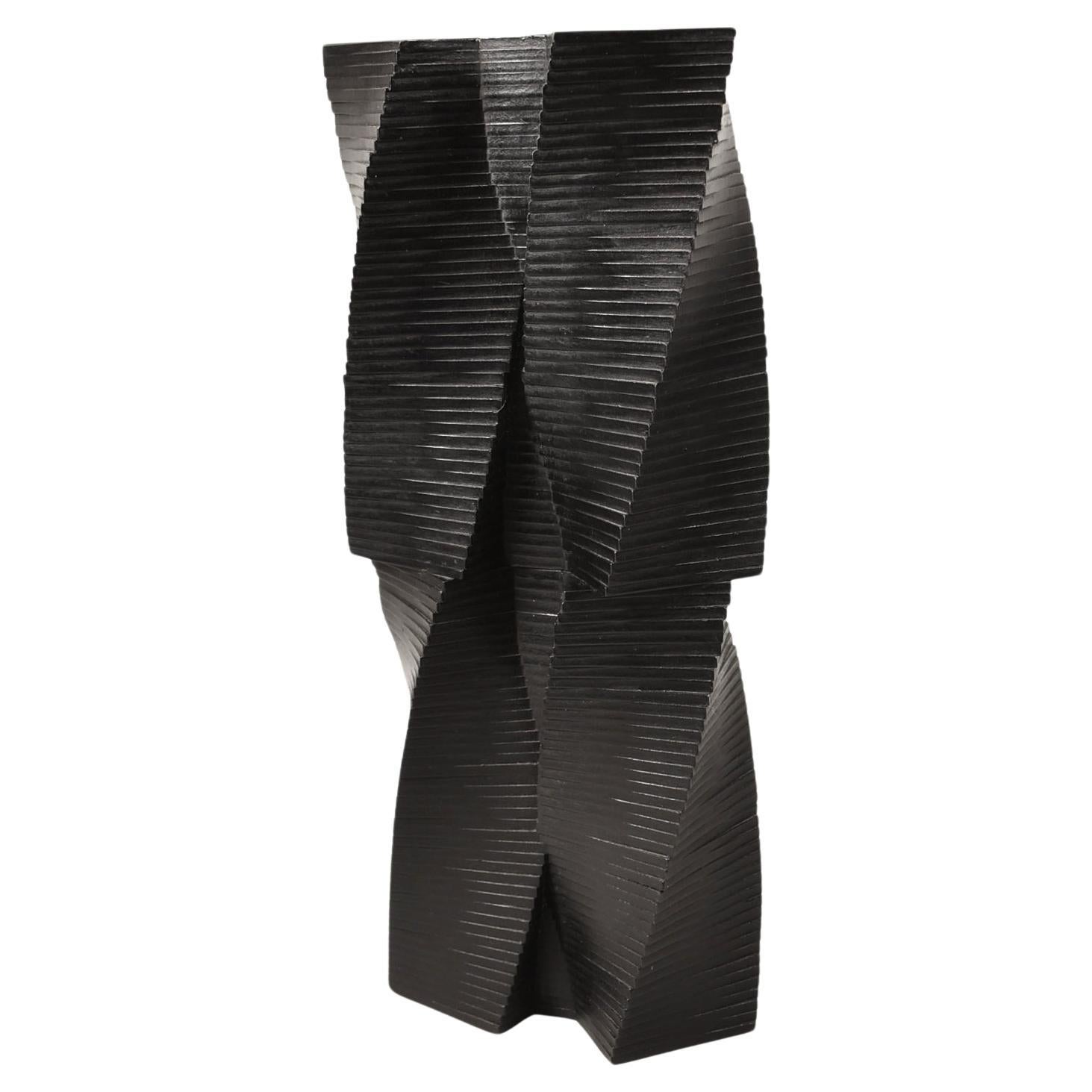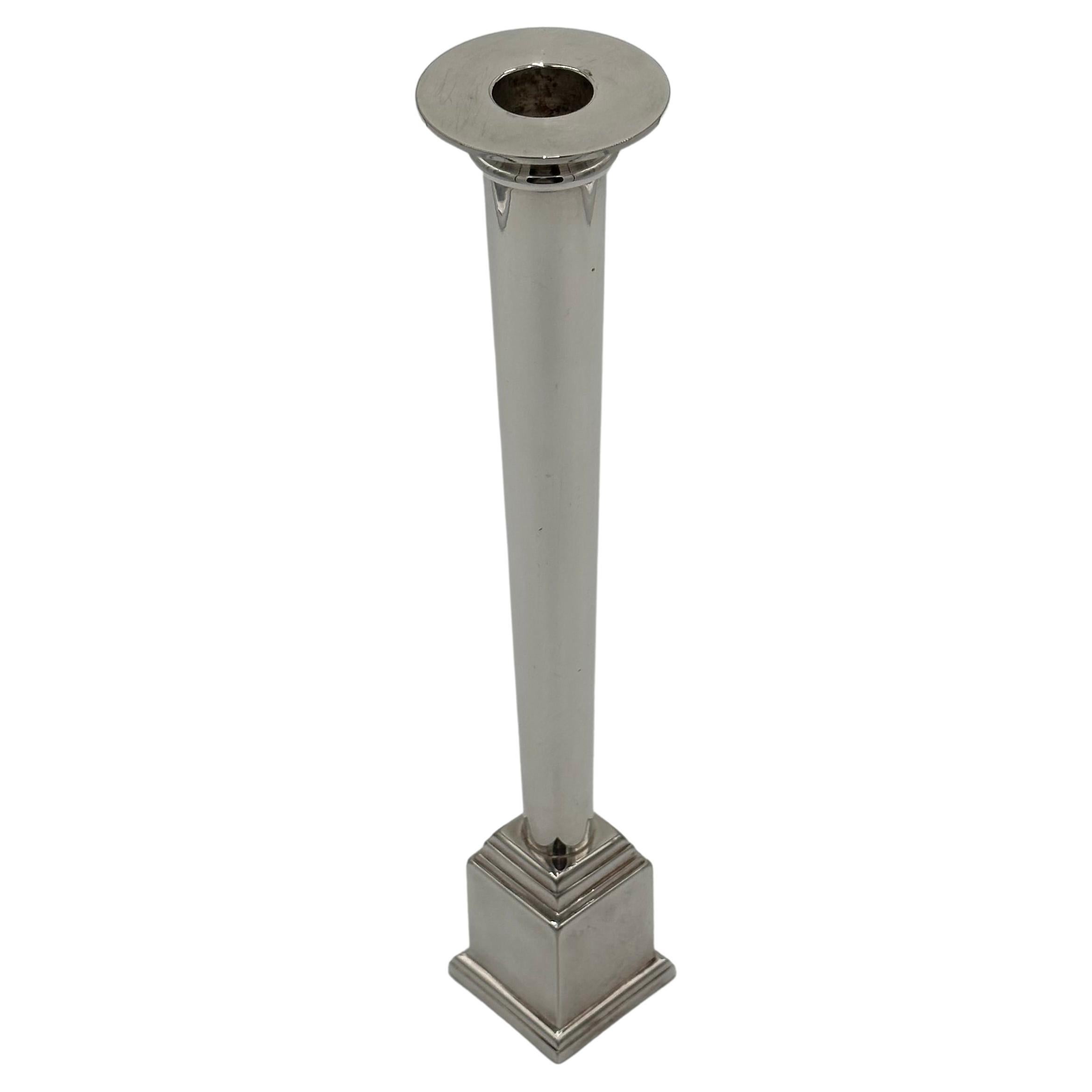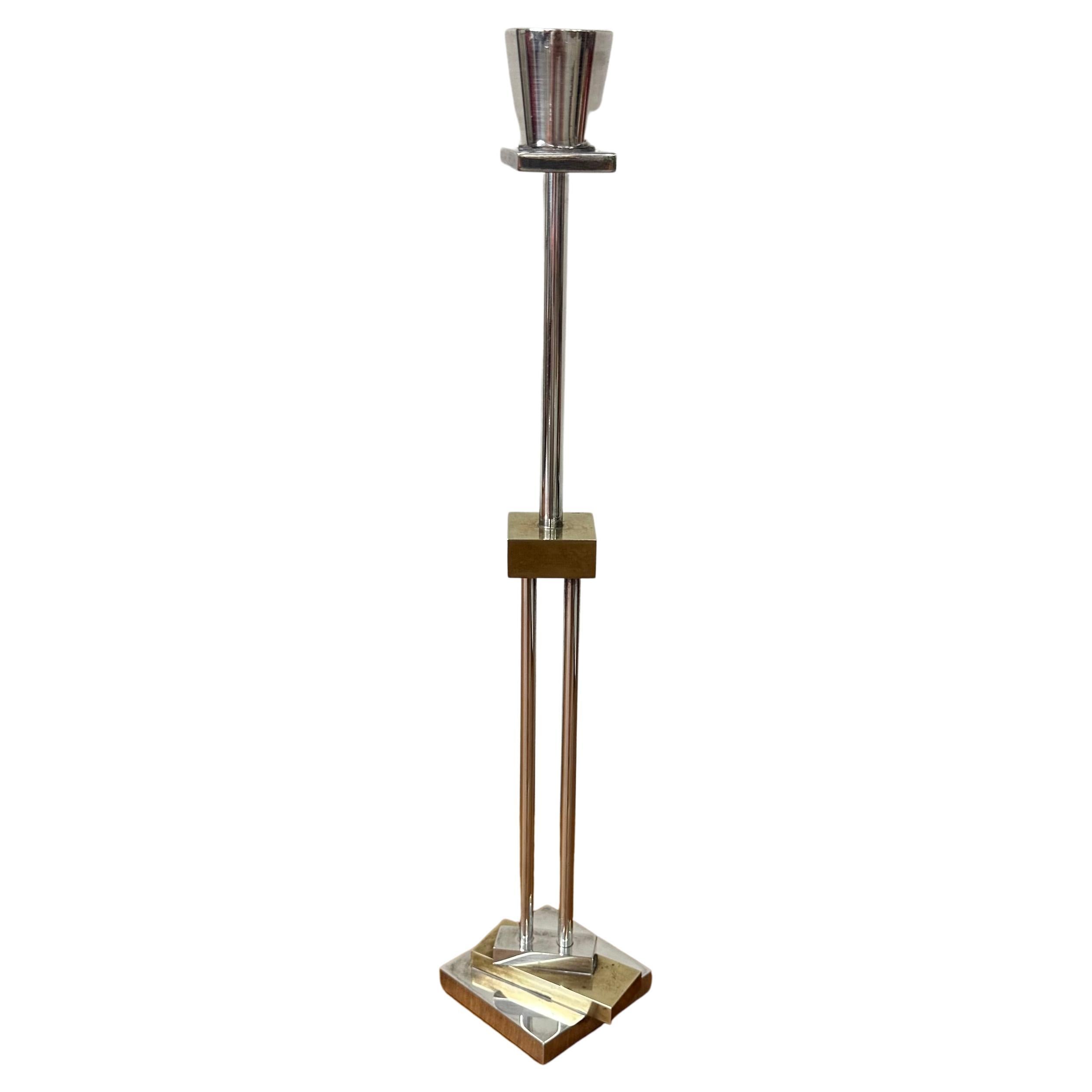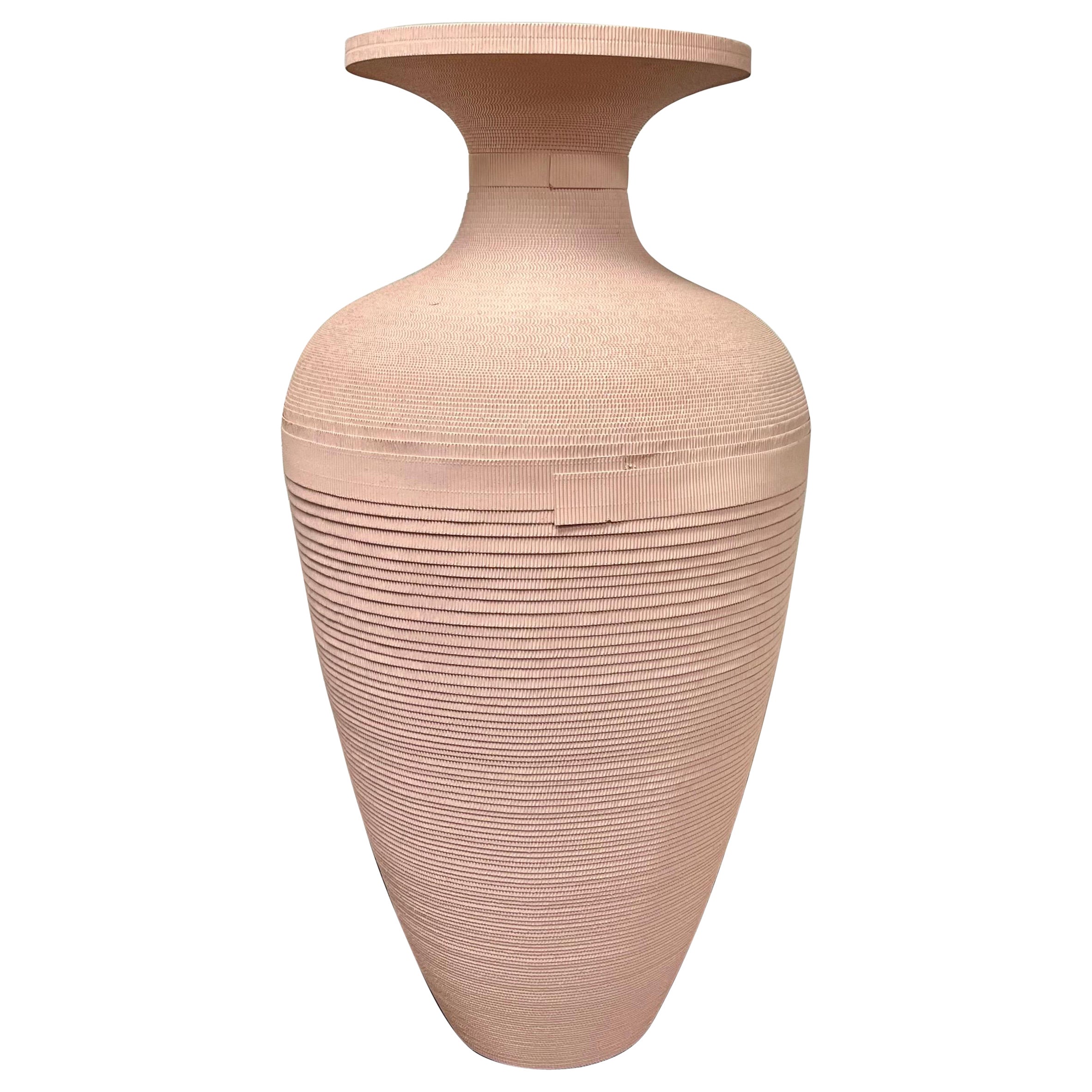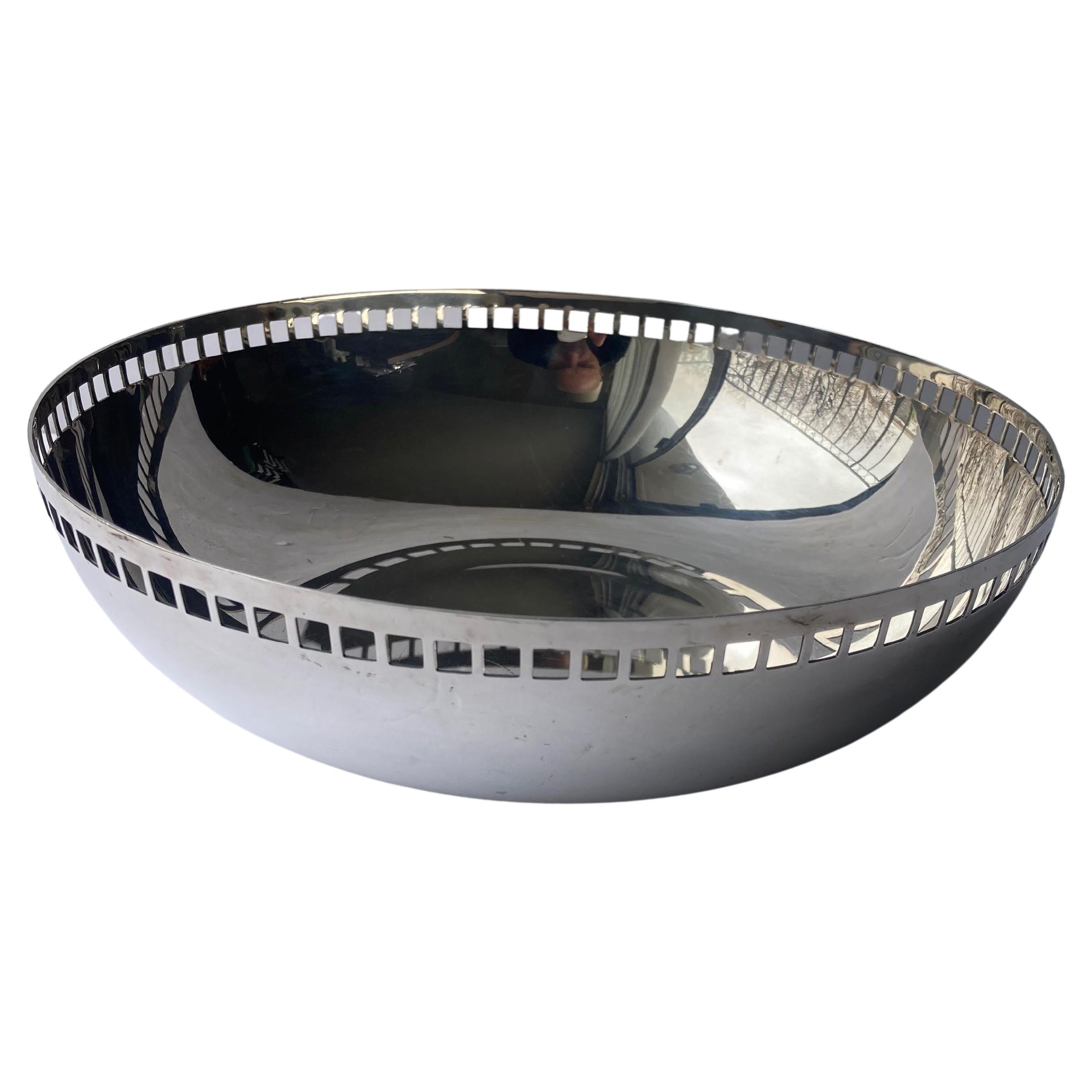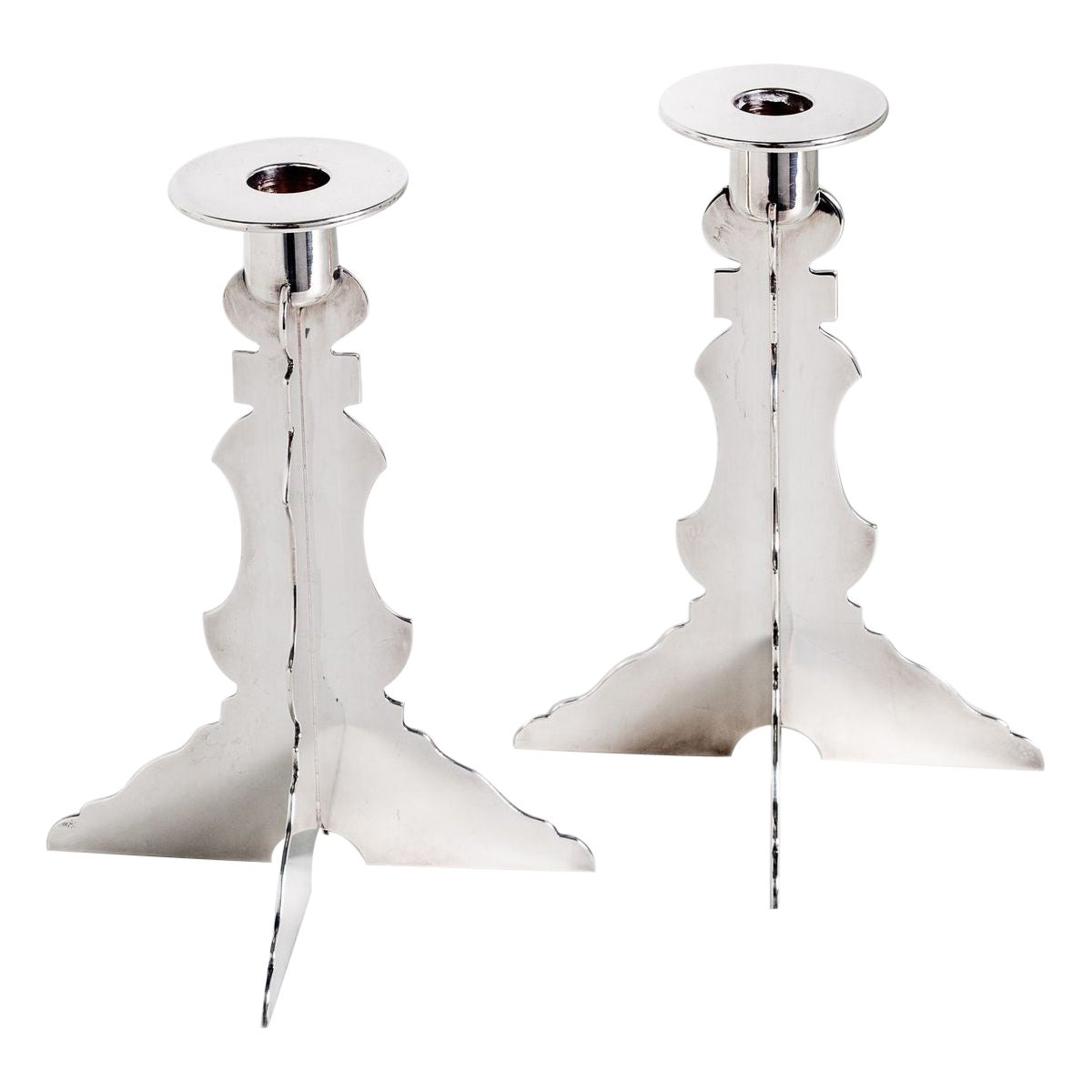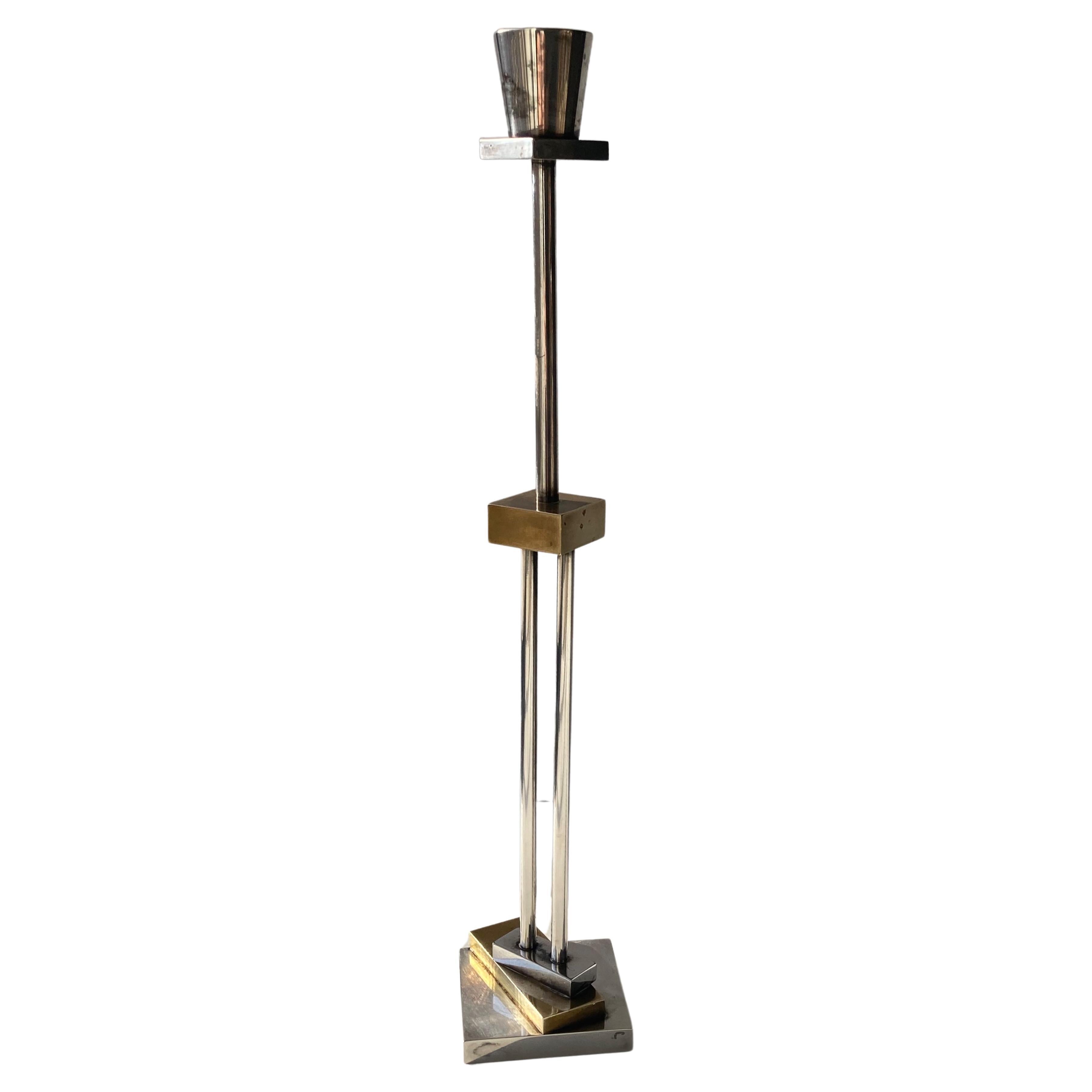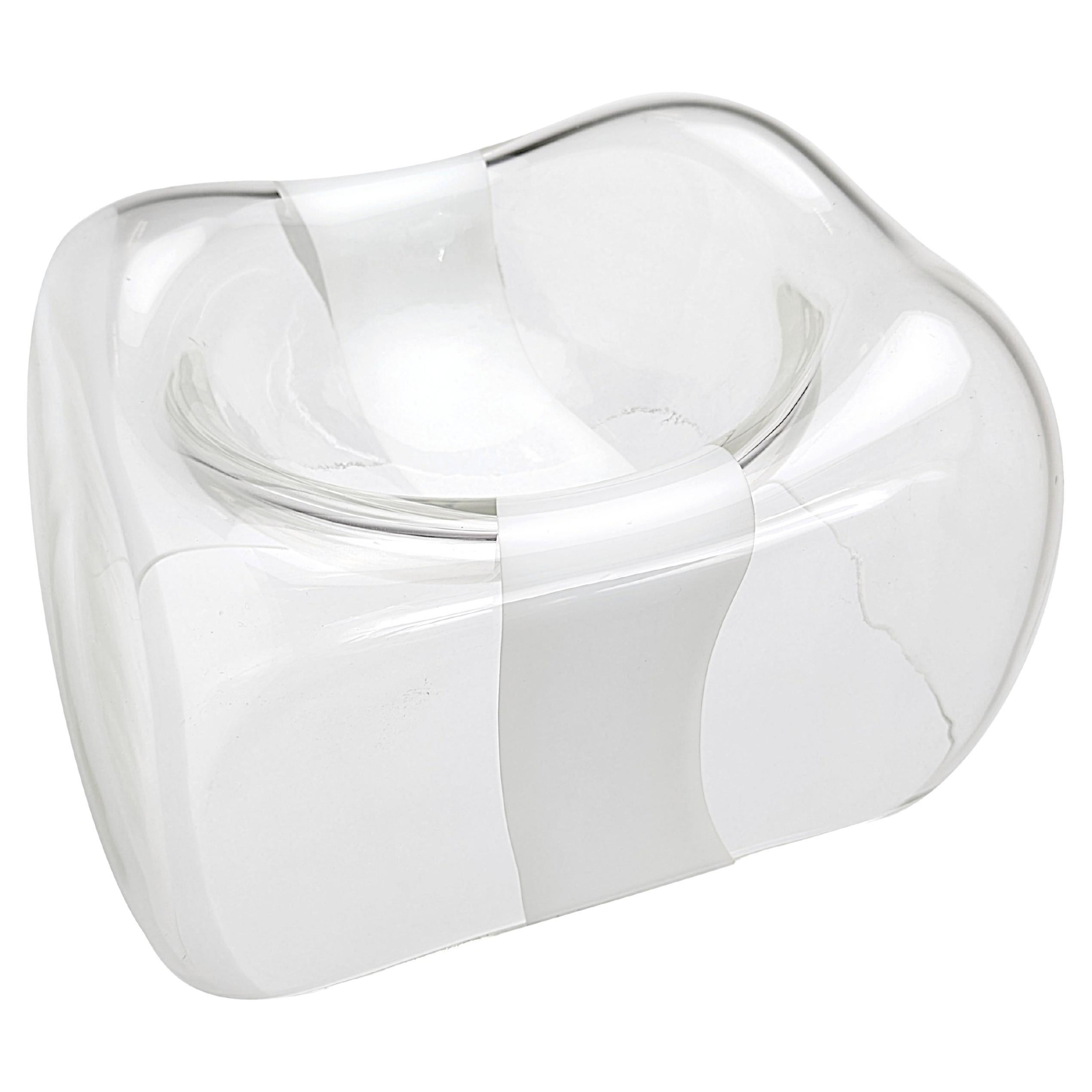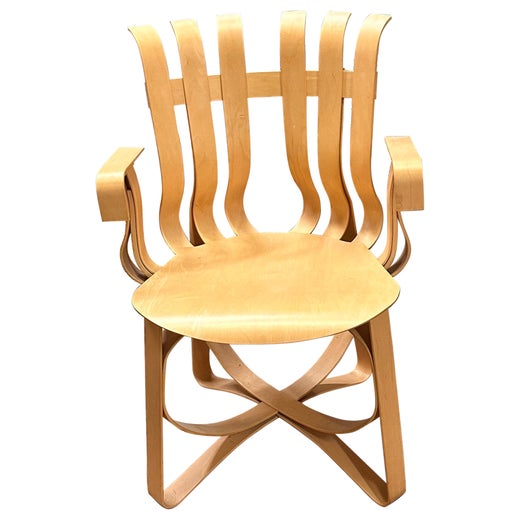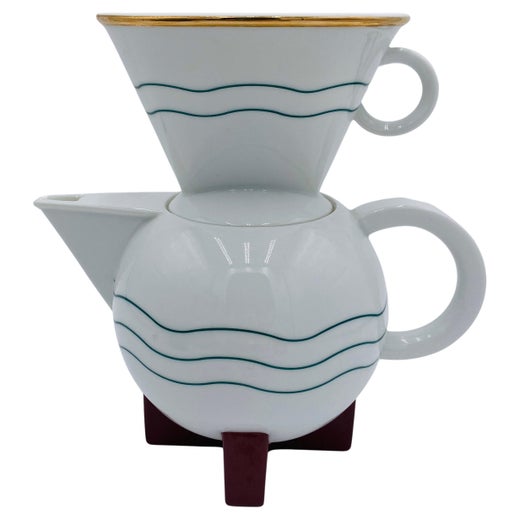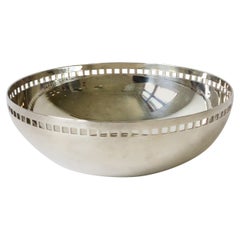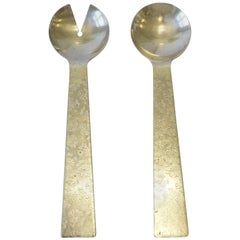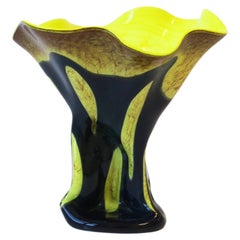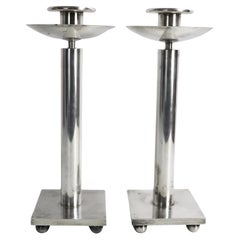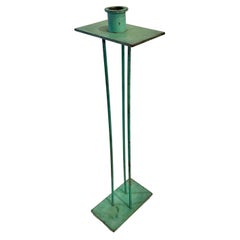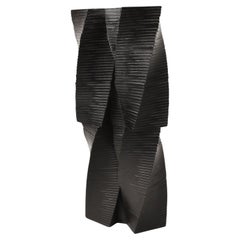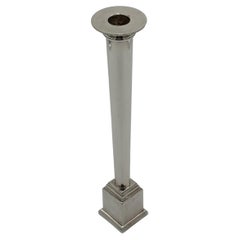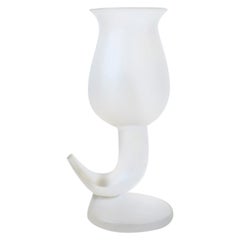
Postmodern Art Glass Sculpture by Architect Frank Gehry for Swid Powell Co.
View Similar Items
Postmodern Art Glass Sculpture by Architect Frank Gehry for Swid Powell Co.
About the Item
- Creator:Frank Gehry (Designer),Swid Powell (Maker)
- Dimensions:Height: 7.63 in (19.39 cm)Width: 4.25 in (10.8 cm)Depth: 3.25 in (8.26 cm)
- Style:Post-Modern (Of the Period)
- Materials and Techniques:Glass,Frosted
- Period:1990-1999
- Date of Manufacture:circa 20th Century
- Condition:Wear consistent with age and use. - Very Good condition as show in images with no chips noted.
- Seller Location:New York, NY
- Reference Number:1stDibs: LU1314218477692
Frank Gehry
With magnificent buildings such as the Guggenheim Bilbao, Disney Concert Hall in Los Angeles and the new Foundation Louis Vuitton in Paris, Frank Gehry has changed the nature and spirit of contemporary architecture. Yet the world’s best-known living architect has also enjoyed a prolific career as a designer of artful and functional objects, ranging from furniture to jewelry, that even at smaller scale are as lively and captivating as his architectural designs.
Gehry was born in Toronto and moved with his family to Los Angeles in 1947. He received a degree in architecture from the University of Southern California in 1954 and — after several years of casting about that included a stint in the U.S. Army and studies at Harvard — Gehry opened his architectural practice in L.A. in 1962.
Idiosyncratic renovations to his small, traditional house in Santa Monica — such as cladding portions of the exterior in chain-link fencing and corrugated metal — drew attention to Gehry in architectural circles. Corporate and institutional commissions added to his reputation, culminating in the global acclaim that greeted the opening of the Guggenheim Bilbao in 1997. But the combination of visual dynamism and structural integrity expressed by that building had been evident for decades in Gehry’s designs. In 1972 he introduced a much-admired line of furniture he called Easy Edges. The curves and flowing lines of the pieces, which include the Wiggle chair, seem antithetical to the material are made from: cardboard — a presumably flimsy material that, when stacked, laminated and folded, is actually extraordinarily sturdy.
Many of Gehry’s designs feature an abstracted fish motif. For the architect, it is a symbol of vitality, strength and flexibility. The fish appears in a group of 1982 plastic lamps created for Formica (and exhibited by the Jewish Museum in New York in 2010). Gehry used the motif in crystal goblets for Swid Powell (1990), his Pito kettle for Alessi (1992) and as earrings for a 2006 jewelry collection for Tiffany that also includes torqued rings, necklaces and bangles.
Gehry returned to furniture design in 1992 with a remarkably energetic line of furniture for Knoll with frames and seating made of bent, lightweight wooden strops. (The pieces' names, such as Power Play and Cross Check, derive from ice hockey.) In 2004, Heller released a group of twisted, faceted furnishings in molded polyethylene meant to evoke Gehry’s architecture. But — whether its tableware, jewelry or furniture — all Gehry’s designs do that--sharing an animated aesthetic built on a solid foundational core. To possess a piece of Gehry design is to own one of his buildings, in miniature.
Find vintage Frank Gehry chairs, tables and other furniture on 1stDibs.
Swid Powell
The New York City–based tableware company Swid Powell produced some of the most distinctive china and silver of the 1980s in collaboration with international architects and designers. It enjoyed renewed attention in 2007, when the Yale University Art Gallery mounted the exhibition “The Architect’s Table: Swid Powell and Postmodern Design,” celebrating the donation to its collection of the company’s papers.
Swid Powell was established in 1982 by Nan Swid and Addie Powell, who met while working at the modernist furniture company Knoll. Their idea was to translate the aesthetics of postmodern design from the skyscraper to the dining table, and they brought into their preliminary discussions nine prominent architects. Among these were Philip Johnson, Stanley Tigerman and Richard Meier, all of whom expressed enthusiasm about making their designs accessible beyond the small group with the funds to commission buildings from them.
The first Swid Powell collection was launched in 1984, accompanied by a bold, graphic print campaign in keeping with the era’s advertising trends. The company’s best-known collaboration was with Robert Venturi’s Philadelphia-based firm, Venturi, Scott Brown and Associates, whose patterns — particularly the floral design Grandmother inspired by a tablecloth Venturi saw at the home of a colleague's grandmother — adorned Swid Powell porcelain as well as furniture and clothing.
The firm also partnered with architect Richard Meier, whose geometric designs were inspired in part by those of Josef Hoffmann and Charles Rennie Mackintosh. Swid Powell also worked with Arata Isosaki, Ettore Sottsass, Zaha Hadid and George Sowden, creating products that incorporated the bright, saturated colors and popular and historical references, like Classical columns, that animated postmodern design in the 1980s. The Chicago Blue china pattern designed for Swid Powell by the firm Gwathmey Siegel references the distinctive patterns of Frank Lloyd Wright’s leaded glass windows. As you will see in the examples below, Swid Powell continued to produce fine, fashionable homewares throughout the decade and beyond.
More From This Seller
View All1990s Italian Post-Modern Decorative Dishes and Vide-Poche
Silver Plate
1990s American Post-Modern Serving Pieces
Silver Plate
Late 20th Century American Neoclassical Serving Pieces
Silver Plate
Mid-20th Century Organic Modern Vases
Art Glass, Blown Glass
Vintage 1930s American Art Deco Vases
Chrome
Late 20th Century Swedish Post-Modern Vases
Crystal
You May Also Like
Vintage 1980s Italian Post-Modern Candlesticks
Silver Plate
20th Century American Post-Modern Candlesticks
Bronze
Early 2000s American Abstract Sculptures
Bronze
Vintage 1980s Italian Post-Modern Candlesticks
Silver Plate, Brass
Vintage 1980s Italian Post-Modern Candlesticks
Silver Plate, Brass
20th Century American Post-Modern Vases
Paper
Recently Viewed
View AllRead More
Five of Our Favorite Pieces From the Cooper Hewitt’s Storage
The off-site collection comprises more than 215,000 pieces.
These New York Architects Love a Complicated Project
From Brooklyn townhouses to Maine campgrounds, Trattie Davies and Jonathan Toews relish a challenge, like transforming a former warehouse space into the new 1stdibs Gallery.
